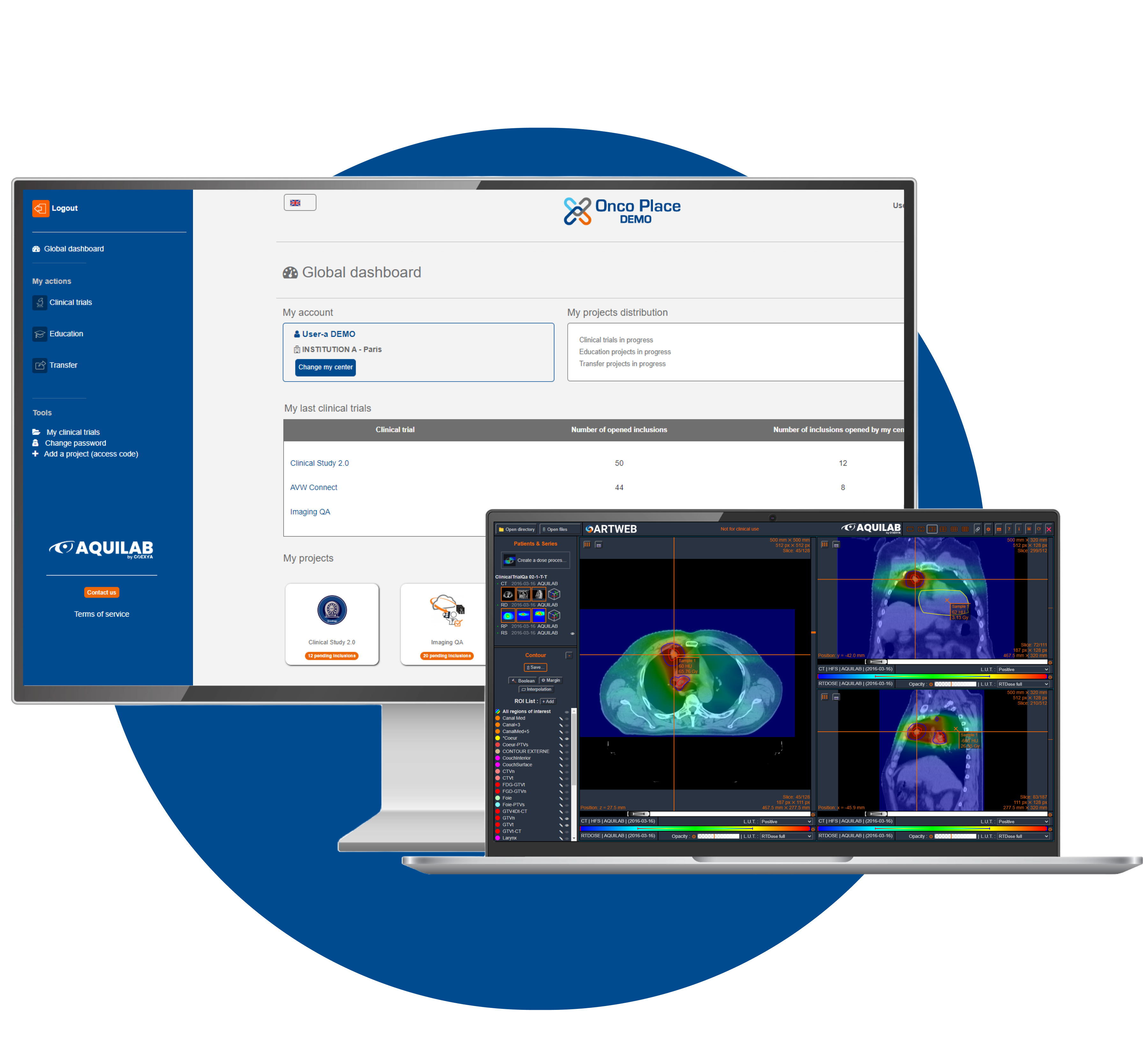Onco Place Analytics
The analytical tools of Onco Place provide statistical analyses and data processing models based on the data collected within Onco Place. Its goal is to go beyond simple data collection to achieve the transformation and exploration of data on patient cohorts.

Presentation and Features
Descriptive Statistics
Calculates first-order statistics to summarize the project's database. This provides an overview and can facilitate quality control.
Exemple
Number and percentage of patients receiving chemotherapy or average duration of treatment.
Dose-Volume Histogram
Automatically calculates (or reads) Dose-Volume Histograms (DVHs) based on DICOM images and previously uploaded DICOM RT data (contours and RT dose distribution) on the Onco Place platform.
Dose Indices
Allows the calculation of dose indices based on user-defined models and previously calculated DVHs. All dose indices can be used as new features in other modules.
Example
Dmean, DV%, VDGy, Near-min Dose, Dmax, DSC, gEUD...
Variable Creation
Allows for the definition and extraction of new features (data) from the original project database or from previously extracted or calculated features. Calculated dose indices can also be used as input in this module. All newly extracted features can be integrated into other analysis modules.
Example
The database includes weight, age, and height. We can extract the Body Mass Index (BMI) = weight / height² and also obesity=YES if BMI ≥ 30
Survival Curve
Calculates the survival curve of a cohort using the Kaplan-Meier method.
Concordance Index
Calculates the Harrell Concordance Index (C-index), which measures how well two risk scores have the same trend. It is commonly used in survival analysis to compare a predictive death score with the actual survival time.
Cox Proportional Hazards Model
Trains a Cox Proportional Hazards survival model on the selected cohort and evaluates it using cross-validation. Model performance (C-index), coefficients, and Hazard Ratios are provided to identify variables associated with a higher or lower risk of events (e.g., death, recurrence, etc.). All other learned parameters, or those used for training, are also returned to facilitate reproducibility and predictive applications.
Predictive ROC Analysis
Calculates the Receiver Operating Characteristic (ROC) curve based on a given numeric predictive score and a reference variable to predict (disease vs. no disease). The Predictive ROC (PROC) curve can also be computed to assess the reliability of the predictive score in a clinical context, showing Positive Predictive Value (PPV) versus Negative Predictive Value (NPV).
Custom Python Program
Integrates a user's custom Python program into a secure environment and executes it on selected features of a cohort. The purpose of this module is to allow researchers to run custom programs on their project without extracting data from its database
Radiomics
Extract radiomic features (intensities, shapes, textures) from your 3D CT imaging and radiotherapy contours. Radiomic calculations are performed using the PyRadiomics library in compliance with the Image Biomarker Standardization Initiative.
AI Contouring
AI models for automatic segmentation to standardize and expedite the workflow.